Powering your future with lighter, longer lasting, faster charging, and higher energy lithium batteries
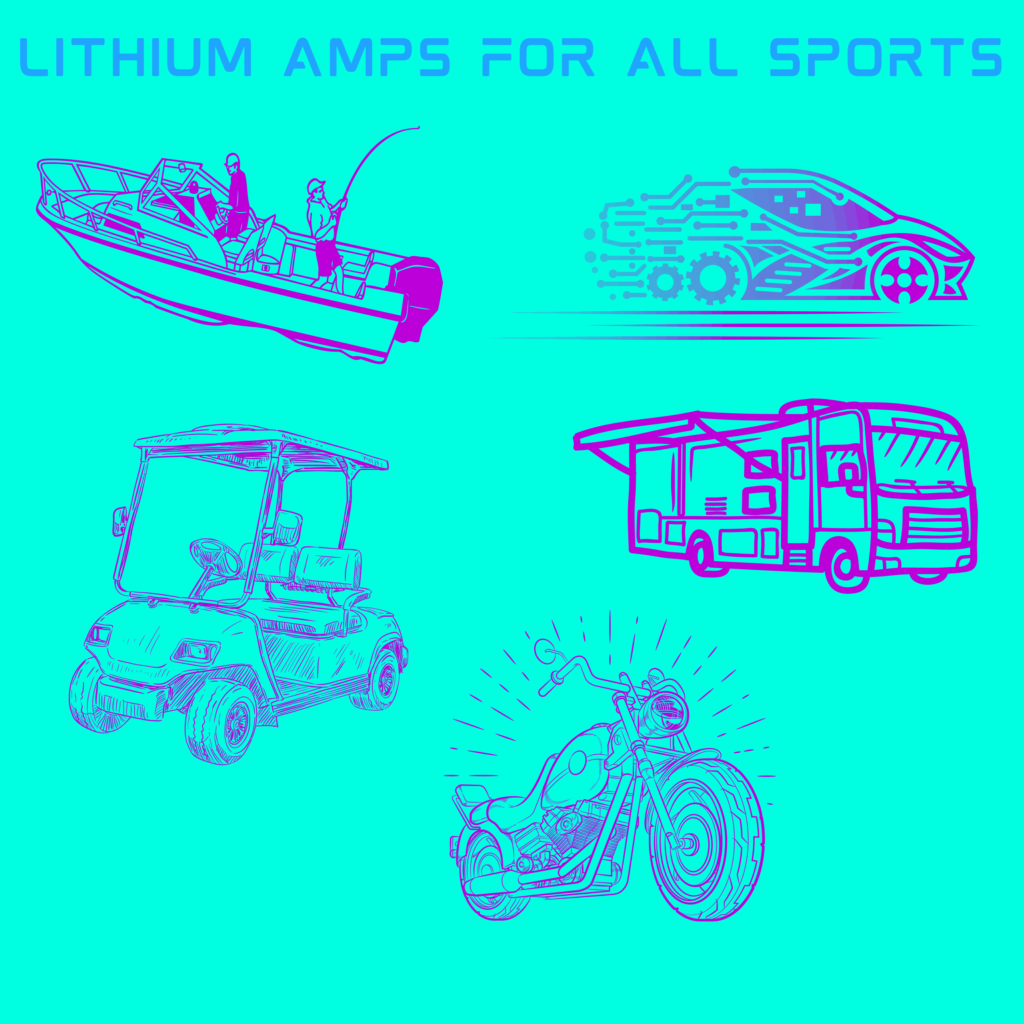
Unlock the Power of Tomorrow Today! Welcome to our lithium battery site, where innovation meets reliability. Say goodbye to the limitations of traditional batteries and embrace a new era of energy efficiency, longevity, and performance. Whether you’re powering your RV adventures, conquering the golf course, or leading the charge toward a sustainable future, our lithium batteries are your ticket to freedom. Step into the future of power at our store and take control of your energy needs like never before.
ORDER A BATTERY TODAY
Lithium Car Audio Battery
The Future of Car Audio: The Rise of Automotive Lithium Batteries
The electric vehicle (EV) revolution is powering forward, and at its heart lies the innovative progress of automotive lithium batteries. These energy storage solutions are not only propelling EVs to new heights of efficiency and accessibility but also finding their place in a range of applications beyond transportation. With significant advancements in technology and a surge in market growth, the future of lithium batteries is bright, promising a more sustainable and energy-efficient world.
Core messages
- The lithium car audio battery market is experiencing explosive growth, with a projected CAGR of 23.9% from 2024 to 2034, indicating a bright future for energy storage technologies.
- Advancements in lithium battery technology, such as increased energy density, faster charging times, and cost reductions, have been pivotal in making EVs more accessible to consumers.
- The Lithium car audio battery is expanding its reach beyond EVs, playing a crucial role in stationary energy storage, renewable energy integration, and grid stability.
- Innovative developments, such as mass-producing polymer solid electrolytes and healable solid-state lithium-sulfur batteries, are setting the stage for the next generation of lithium battery technology.
- Sustainability efforts, including second-life applications and advancements in battery recycling, are crucial for reducing the environmental impact of lithium batteries and ensuring a greener future.
The Evolution of Electric Vehicle Batteries
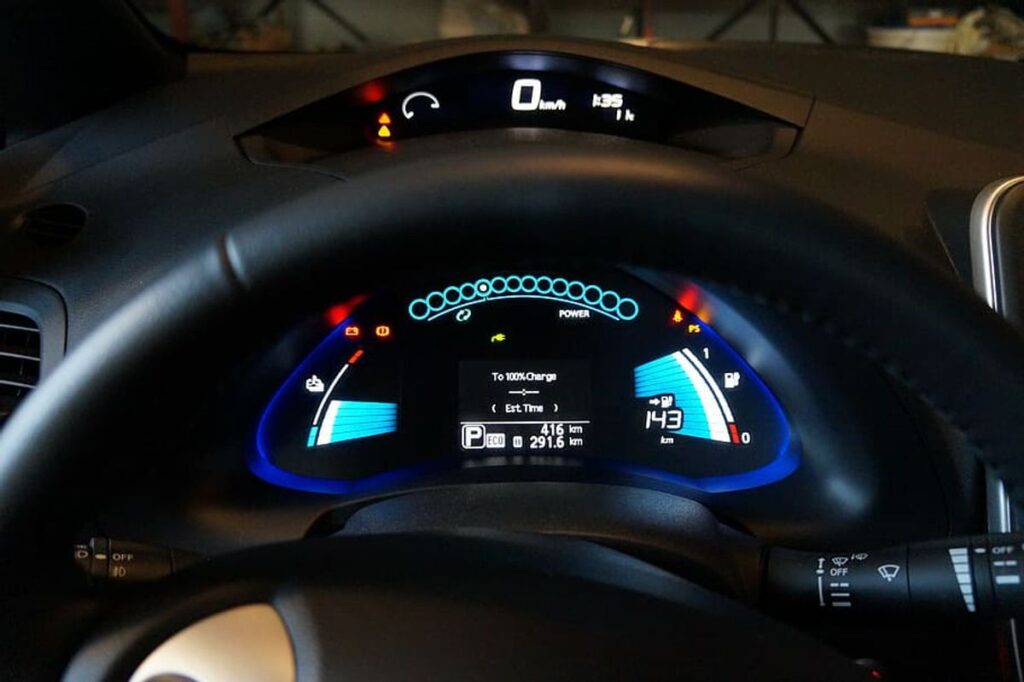
Advancements in Energy Density and Charging Times
The relentless pursuit of innovation in electric vehicle (EV) battery technology has led to significant advancements in energy density and charging times. Lithium-ion batteries, the cornerstone of modern EVs, have seen a transformation that has directly impacted the practicality and appeal of electric vehicles.
With the introduction of new-generation batteries equipped with solid electrolytes, we are witnessing a leap in performance. These batteries promise not only a higher energy density but also the ability to charge more rapidly, addressing two of the most critical concerns for EV owners: range and downtime.
The evolution of electric vehicles is inextricably linked to the progress in battery technology. As we move forward, the focus on enhancing energy density and reducing charging times remains paramount in driving the adoption of EVs.
Innovative solutions, such as fast-charging technology, are revolutionizing the EV experience by significantly reducing charging times. This advancement is crucial for overcoming ‘range anxiety’ and is a key factor in increasing consumer confidence in electric mobility.
Cost Reduction and Consumer Accessibility
The affordability of electric vehicles (EVs) has been a critical factor in their adoption. Significant strides in cost reduction have been made, largely due to advancements in lithium car audio battery technology. These batteries, essential for powering EVs, have seen a decrease in production costs, making the overall price of electric vehicles more accessible to consumers.
Educational campaigns play a pivotal role in increasing consumer awareness about the benefits of EVs. By highlighting the long-term cost savings and environmental advantages, manufacturers are addressing common misconceptions and stimulating demand. Additionally, flexible financing options and incentives are crucial in making EVs financially attainable, especially in light of rising interest rates and prices.
The Biden-Harris Administration’s investment in projects to reduce costs for consumer battery recycling is a testament to the ongoing efforts to make EVs more affordable.
Here’s a look at some of the strategies being implemented:
- Flexible financing options to counter the impact of rising interest rates
- Price adjustments and incentives to attract buyers
- Expansion of charging infrastructure to support EV adoption
These initiatives are essential for the continued growth of the EV market and the transition towards sustainable transportation.
The Role of Lithium-Ion Batteries in EV Progress
The ascent of electric vehicles (EVs) owes much to the evolution of the lithium car audio battery. These powerhouses have not only revolutionized the automotive industry but have also found their niche in specialized applications, such as high-performance car audio systems. A lithium car audio battery exemplifies this versatility, offering superior power and longevity for audio enthusiasts.
Lithium-ion batteries have been instrumental in addressing the initial challenges faced by EVs. Their high energy density and improved safety features, like those seen in LFP (Lithium Iron Phosphate) variants, have mitigated concerns such as thermal runaway. This has paved the way for EVs to become a more reliable and safer choice for consumers.
- Market Acceptance
- Enhanced Safety
- Technological Innovations
- Sustainable Practices
The integration of lithium-ion technology in EVs has been a game-changer, propelling the industry forward and setting new benchmarks for performance and sustainability.
As we look to the future, the role of a lithium car audio battery in EVs will continue to evolve. Innovations in battery technology will further enhance the driving experience, reduce environmental impact, and expand the applications of these versatile power sources.
Expanding Applications Beyond Electric Vehicles
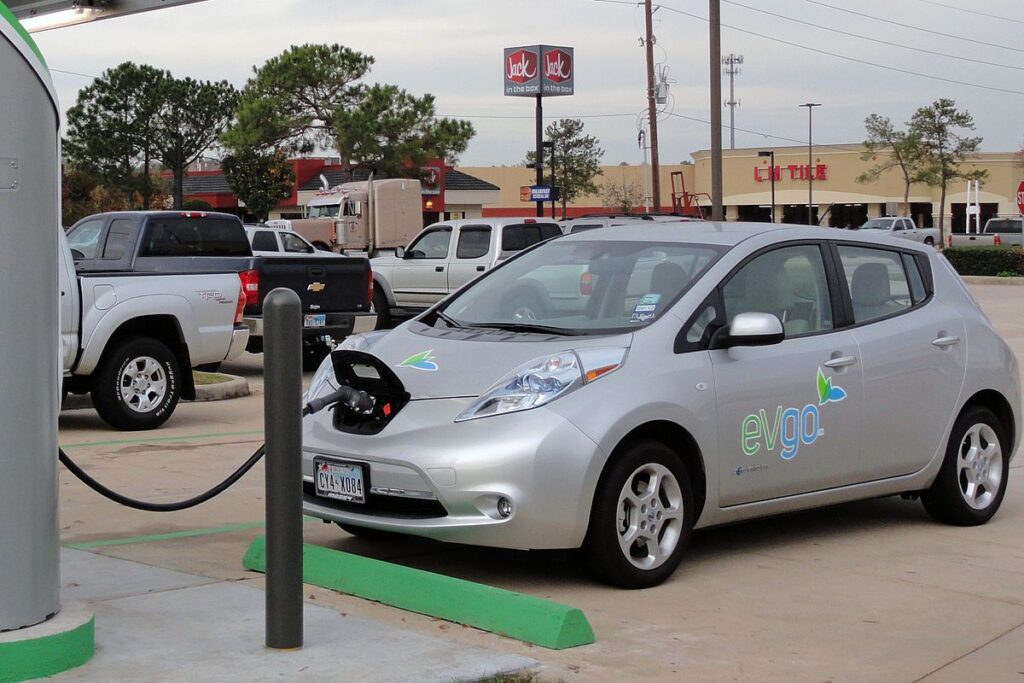
Stationary Energy Storage Systems
The versatility of lithium-ion technology extends well beyond the realm of electric vehicles, playing a pivotal role in the development of stationary energy storage systems. These systems are integral to the modern energy landscape, offering a myriad of benefits such as grid stability, the integration of renewable energy sources, and the facilitation of load shifting to optimize energy consumption.
The demand for a lithium car audio battery in stationary storage applications is reflected in the significant market growth projections. By 2024, the market is estimated to reach a valuation of US$ 43.4 billion, with an impressive compound annual growth rate (CAGR) of 23.9%, potentially soaring to US$ 371.0 billion by 2034.
The following table summarizes the market forecast for stationary energy storage systems:
| Year | Estimated Market Size | Projected Market Valuation | CAGR |
|---|---|---|---|
| 2024 | US$ 43.4 billion | – | – |
| 2034 | – | US$ 371.0 billion | 23.9% |
As the technology continues to evolve, the applications of lithium-ion batteries in stationary energy storage will likely expand, further driving the demand for advanced battery materials and innovative storage solutions.
Integration with Renewable Energy Sources
The integration of lithium car audio batteries with renewable energy sources is a pivotal step in creating a sustainable energy ecosystem. Smart charging solutions are at the forefront of this integration, optimizing the use of charging infrastructure and promoting grid stability. These solutions enable dynamic charging management that responds to grid conditions, energy demand, and cost considerations.
Lithium batteries are not only revolutionizing the automotive industry but are also becoming crucial in stationary energy storage systems. They store excess renewable energy and provide backup power, which is essential for a reliable and efficient energy network.
The potential of lithium batteries in conjunction with renewable energy sources is immense, yet their widespread use is hampered by challenges. One such challenge is ensuring the efficient and safe integration of these technologies into the existing energy infrastructure. As the market for lithium batteries grows, with an estimated size of US$ 43.4 billion in 2024 and a projected valuation of US$ 371.0 billion by 2034, addressing these challenges becomes increasingly important.
Backup Power Solutions and Grid Stability
The integration of the lithium car audio battery into backup power solutions marks a significant step towards enhancing grid stability. These batteries, known for their high energy density and long life cycles, are now being adopted in various sectors, including automotive audio systems, where they ensure uninterrupted performance even during power outages.
The lithium car audio battery offers a unique combination of power and reliability, making them an ideal choice for critical backup applications where consistent energy supply is paramount.
Smart charging solutions, such as those developed by FlexGen, are pivotal in optimizing the utilization of charging infrastructure. These technologies not only alleviate strain on the electrical grid but also contribute to a more stable and efficient energy landscape. The table below outlines the applications and regions where lithium batteries are making an impact:
| Application | Region |
|---|---|
| Automotive | North America |
| Grid Energy Storage | Western Europe |
| Consumer Electronics | East Asia |
| Others | Middle East and Africa |
As the demand for renewable energy sources grows, the role of the lithium car audio battery in providing backup power and contributing to grid stability becomes increasingly crucial. Their ability to store excess renewable energy underscores their importance in a future-oriented energy ecosystem.
Innovations in Lithium Battery Technology
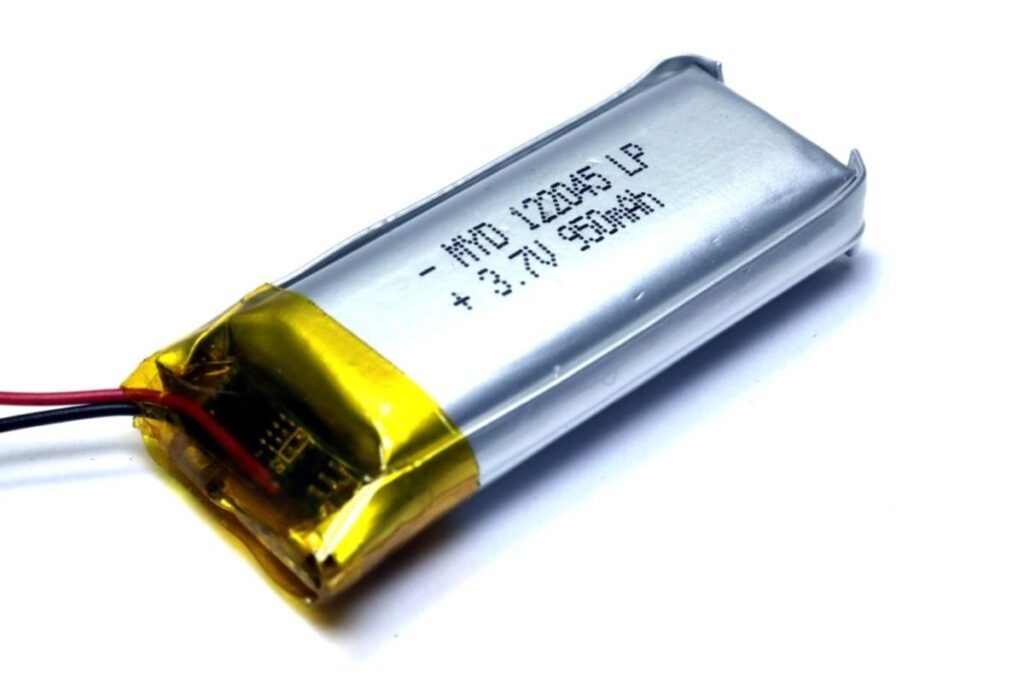
Mass-Producing Polymer Solid Electrolytes For The Lithium Car Audio Battery
The quest for safer and more efficient electric vehicles has led to a significant breakthrough in battery technology. Scientists have developed a revolutionary method for mass-producing polymer solid electrolytes. These electrolytes are key to enhancing the safety and performance of the lithium car audio battery, which is gaining popularity due to their superior power and longevity compared to traditional lead-acid batteries.
The new production technique promises to scale up the availability of high-quality solid electrolytes, potentially reducing costs and accelerating the adoption of lithium car audio batteries in the market.
The implications of this advancement are far-reaching, with benefits including:
- Improved stability and safety, mitigating risks of short circuits
- Enhanced energy density, allowing for longer playtime and reliability
- Greater flexibility in battery design, enabling sleeker and more compact audio systems
As the automotive industry continues to innovate, the mass production of polymer solid electrolytes is poised to play a pivotal role in the evolution of lithium car audio batteries, driving forward a new era of vehicle electrification and entertainment.
Healable Solid-State Lithium-Sulfur Batteries
The quest for more efficient and durable electric vehicle batteries has led to a significant breakthrough: the development of a healable cathode material for lithium-sulfur batteries. This innovation addresses two major challenges that have historically limited the practicality of solid-state batteries.
Engineers have successfully created a cathode that not only exhibits high electrical conductivity but also possesses the remarkable ability to self-heal after damage. This could dramatically extend the lifespan of batteries and reduce the need for frequent replacements, making electric vehicles more sustainable and cost-effective in the long run.
The healable cathode represents a leap forward in battery technology, potentially revolutionizing the way we power electric vehicles and other high-demand applications.
While the full implications of this technology are still being explored, the potential benefits for the electric vehicle industry and beyond are substantial. The table below summarizes the key advantages of this new cathode material:
| Feature | Benefit |
|---|---|
| Healable | Extends battery life |
| Highly Conductive | Improves energy efficiency |
| Solid-State | Enhances safety |
As research continues, the integration of healable solid-state lithium-sulfur batteries into the market could mark a new era for electric vehicles, where reliability and longevity are significantly improved.
Lithium-Ion Migration in Solid-State Batteries
Understanding the behavior of lithium ions within solid-state batteries is crucial for the development of more efficient and durable energy storage solutions. Imaging techniques that reveal grain boundaries impeding lithium-ion migration offer insights into enhancing battery performance. These grain boundaries can create resistance, slowing down the flow of ions and thus affecting the battery’s efficiency and lifespan.
The new imaging methods allow for a deeper understanding of the internal structure of solid-state batteries, paving the way for improvements in both safety and performance.
Researchers are not only focusing on imaging but also on developing advanced materials, such as polymer solid electrolytes, to improve lithium-ion migration. These materials promise to increase the safety of lithium batteries by addressing internal separator issues that can lead to short circuits. The table below summarizes the recent advancements in solid-state battery technology:
| Advancement | Impact on Lithium-Ion Migration | Expected Benefit |
|---|---|---|
| Imaging Grain Boundaries | Identifies obstructions | Enhanced Efficiency |
| Polymer Solid Electrolytes | Reduces internal resistance | Increased Safety |
| Healable Electrodes | Allows for self-repair | Extended Lifespan |
As the technology matures, these innovations could lead to batteries that charge in minutes and last for thousands of cycles, significantly outperforming current lithium car audio battery and contributing to the rise of electric vehicles and other applications demanding high-performance power sources.
Market Growth and Future Projections
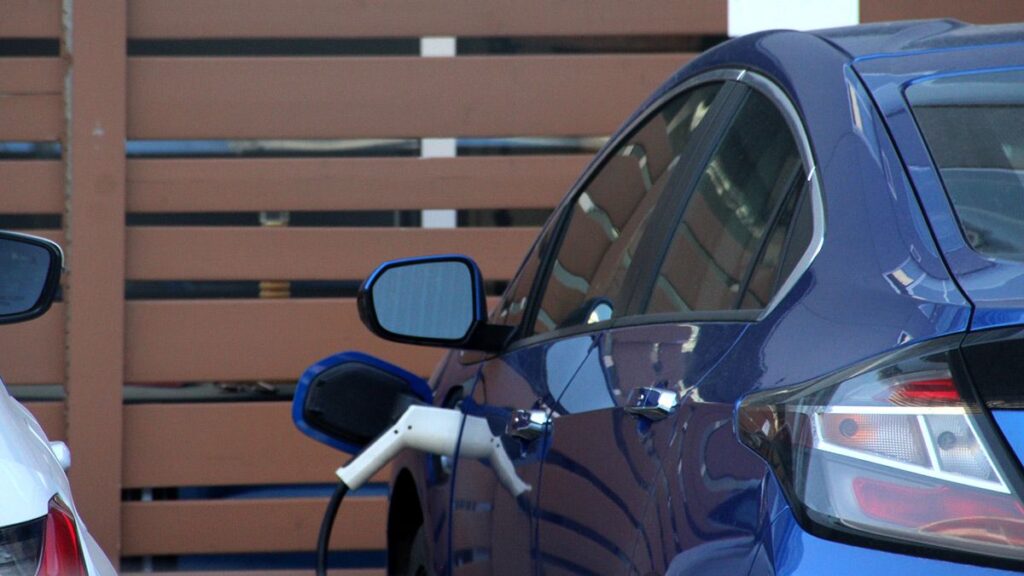
Current Market Valuation and Trends
The lithium-ion battery market is witnessing a significant surge, driven by the increasing demand for electric vehicles and energy storage solutions. The market is projected to reach a staggering US$ 371.0 billion by 2034, with a robust value-based CAGR of 23.9% from 2024 to 2034. This growth is fueled by advancements in lithium battery technology and the expanding applications of these batteries beyond the automotive sector.
The global lithium car audio battery market is expected to reach an estimated $340.4 billion by 2030 with a CAGR of 17.6% from 2024 to 2030. The major drivers for this growth include the rising adoption of electric vehicles, advancements in lithium battery technology, and the increasing need for efficient energy storage systems.
The market is segmented by type and application, with automotive applications leading the charge. The following table provides a succinct overview of the key market segments:
| Type | Application |
|---|---|
| Cathode Material | Lithium Car Audio Battery |
| Anode Material | Grid Energy Storage |
| Lithium Ion Battery Separator | Consumer Electronics |
| Electrolyte | Others |
Regionally, North America and Latin America are among the key markets, with significant investments and initiatives to promote the adoption of the lithium car audio battery.
Forecasted Growth and Emerging Opportunities
The electric vehicle (EV) battery market is on the brink of a significant transformation. The global EV battery market is projected to grow from USD 132.6 billion in 2023 to USD 508.8 billion by 2033, registering a Compound Annual Growth Rate (CAGR) of 14.4%. This growth is fueled by the increasing adoption of electric vehicles, advancements in battery technology, and supportive government policies.
Emerging opportunities within this sector are vast, particularly in the realm of a lithium car audio battery. These batteries are gaining traction due to their superior performance characteristics, such as higher energy density and longer lifespan compared to traditional lead-acid batteries. As a result, they are becoming a popular choice for automotive enthusiasts seeking enhanced audio experiences without compromising vehicle performance.
The rise of lithium car audio batteries signifies a niche yet rapidly expanding segment within the broader EV battery market. Their integration into high-performance vehicles underscores the diverse applications and potential of lithium battery technology.
The following table illustrates key segments within the lithium-ion battery materials market, highlighting the potential for growth in various applications:
| Application | Projected Growth |
|---|---|
| Lithium Car Audio Battery | High |
| Grid Energy Storage | Moderate |
| Consumer Electronics | Low |
| Others | Emerging |
As the market evolves, stakeholders are encouraged to monitor these segments closely to capitalize on the emerging opportunities presented by the burgeoning lithium battery industry.
Impact of Technological Advancements on Market Dynamics
The electric vehicle (EV) market is undergoing a significant transformation, largely fueled by the advancements in lithium battery technology. Lithium car audio batteries, a niche yet important segment, exemplify the broader trend of innovation driving market dynamics. These batteries are gaining traction due to their superior performance characteristics, such as higher energy density and longer lifespan compared to traditional lead-acid batteries.
The integration of lithium batteries into the car audio sector not only enhances the listening experience but also contributes to the overall value proposition of electric vehicles.
As the demand for electric vehicles surges, the market for associated components, including lithium car audio batteries, is expected to expand. This growth is reflected in the rising demand for EVs, which is a direct outcome of technological innovations and a maturing supply chain. However, the market also faces challenges, such as the need for improved inventory management in the face of increasing interest rates and prices.
The table below summarizes the impact of technological advancements on the lithium car audio battery market:
| Factor | Influence on Market |
|---|---|
| Energy Density | Increased demand |
| Charging Speed | Enhanced user convenience |
| Cost Efficiency | Greater consumer accessibility |
| Supply Chain Maturation | More reliable product availability |
In conclusion, technological advancements in lithium batteries are reshaping the EV market landscape, with lithium car audio batteries playing a pivotal role in this evolution.
Sustainability and Recycling in the Lithium Car Audio Battery Industry
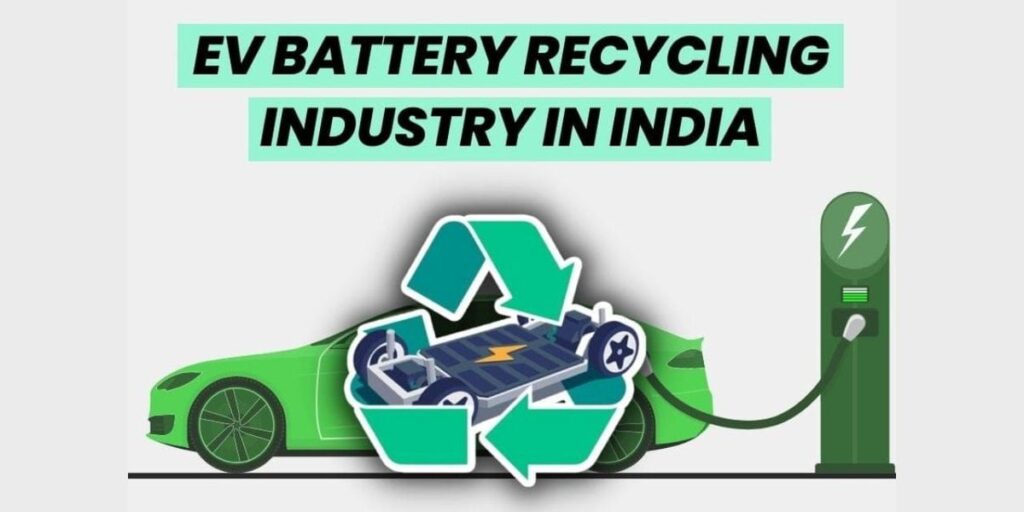
Second Life for Lithium-Ion Batteries
The concept of a second life for lithium-ion batteries is gaining traction as a sustainable approach to extend the usefulness of EV batteries beyond their automotive lifespan. Even after their performance declines for vehicular use, these batteries can still hold a significant charge, making them suitable for less demanding applications.
- The Lithium car audio battery is an emerging market for these second-life batteries.
- They offer a cost-effective and environmentally friendly option for high-performance audio systems.
- The longevity of these batteries aligns with the less intensive energy requirements of car audio systems compared to EV propulsion.
The transition from powering vehicles to enhancing audio experiences represents a valuable shift in the lifecycle of EV batteries.
By repurposing EV batteries for applications like car audio systems, we not only reduce waste but also capitalize on the remaining energy capacity of these powerful cells. This practice contributes to a circular economy, where the value of lithium-ion batteries is maximized before recycling.
Innovations in Battery Recycling
The landscape of lithium car audio battery recycling is rapidly evolving, with new technologies paving the way for more sustainable practices. Recent advances in lithium-ion battery recycling technologies are improving the economics of EV battery recycling, which in turn could boost EV sales in the United States. While there aren’t a lot of EV batteries reaching the end of their life cycle yet, the impending influx has sparked innovation in recycling methods.
The challenge of recycling lithium car audio batteries lies not only in the recovery of valuable materials but also in the environmental impact of the process. Traditional methods often involve burning or chemically dissolving the batteries, which can be harmful to the environment.
A greener solution has emerged, focusing on the safe removal of adhesives and the dismantling of battery packs to recover key materials more efficiently. This approach not only reduces waste but also mitigates the trade-off between battery performance and recyclability. China is currently leading the way in battery recycling, aiming to become independent of mining raw materials essential for batteries.
The table below summarizes the key components recovered from lithium car audio batteries during the recycling process:
| Material | Recovery Rate (%) |
|---|---|
| Cobalt | 95 |
| Lithium | 90 |
| Nickel | 90 |
| Copper | 98 |
As we continue to innovate and improve recycling technologies, the future of the lithium car audio battery looks promising, with the potential to significantly reduce the environmental footprint of electric vehicles.
Reducing Environmental Impact through Sustainable Practices
The pursuit of sustainability within the lithium battery industry extends beyond the production phase to the end of a battery’s life. Effective recycling of lithium batteries is pivotal to reducing the reliance on virgin resources, minimizing environmental impact, and fostering a circular economy. The process involves several steps, each critical to ensuring that materials are recovered efficiently and responsibly.
- Collection and sorting of spent batteries
- Safe transportation to recycling facilities
- Advanced mechanical and chemical processing to extract valuable materials
- Purification and preparation of recycled materials for reuse
Embracing sustainable practices in recycling not only conserves natural resources but also supports the transition to a more sustainable energy future. It is a testament to the industry’s commitment to environmental stewardship and responsible resource management.
With initiatives like the Mica Initiative and companies like BYD leading the way in renewable energy use in production, the industry is making strides in reducing its carbon footprint. The integration of sustainability measures across the entire lifecycle of lithium batteries, from sourcing to recycling, is crucial for the long-term viability of the industry.
In summary
The ascent of the lithium car audio battery is a testament to the transformative power of innovation in the electric vehicle (EV) industry. As we have seen, the market for lithium-ion battery materials is poised for explosive growth, with a projected CAGR of 23.9% from 2024 to 2034, signaling a bright future for energy storage solutions across various sectors.
The advancements in battery technology have not only revolutionized the EV landscape by enabling higher energy density, faster charging, and longer ranges but have also opened doors to new applications in stationary energy storage and beyond. With the market valuation expected to soar to approximately US$ 371.0 billion by 2034, the continued evolution of lithium batteries holds the key to unlocking a more sustainable, efficient, and electrified future.
Frequently Asked Questions
What advancements in energy density and charging times have been made for EV batteries?
Electric vehicle batteries have seen significant improvements in energy density, allowing for extended driving ranges, and faster charging times, enabling quicker replenishment of power and reduced downtime.
How have lithium car audio batteries contributed to the accessibility of electric vehicles?
Lithium-ion batteries have undergone performance enhancements and cost reductions, making electric vehicles more affordable and accessible to a wider consumer base.
What are some expanding applications of lithium batteries beyond electric vehicles?
Lithium batteries are increasingly used in stationary energy storage systems, integration with renewable energy sources, and as backup power solutions to ensure grid stability.
What innovations are currently shaping lithium car audio battery technology?
Current innovations include the mass production of polymer solid electrolytes, the development of healable solid-state lithium-sulfur batteries, and research on lithium-ion migration in solid-state batteries.
What market growth and future projections exist for the lithium car audio battery industry?
The lithium battery market is projected to grow at a CAGR of 23.9% from 2024 to 2034, with the market valuation expected to increase from US$ 43.4 billion in 2024 to US$ 371.0 billion in 2034.
How is the lithium car audio battery industry addressing sustainability and recycling?
The industry is focusing on giving lithium-ion batteries a second life, innovating in battery recycling techniques, and implementing sustainable practices to reduce environmental impact.
